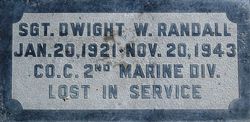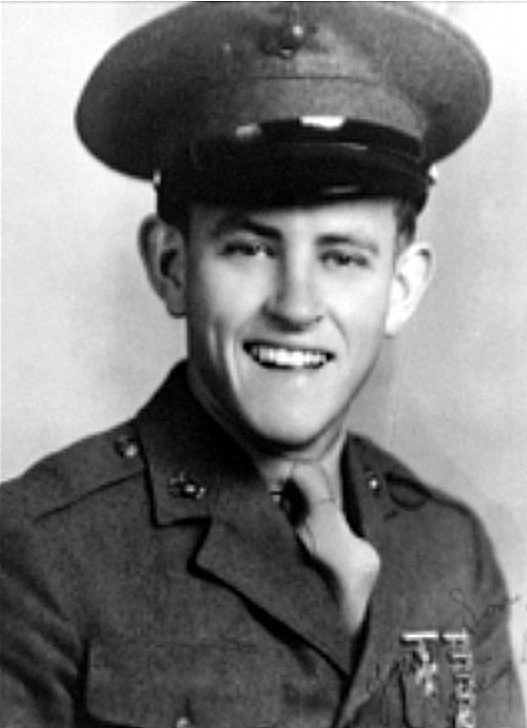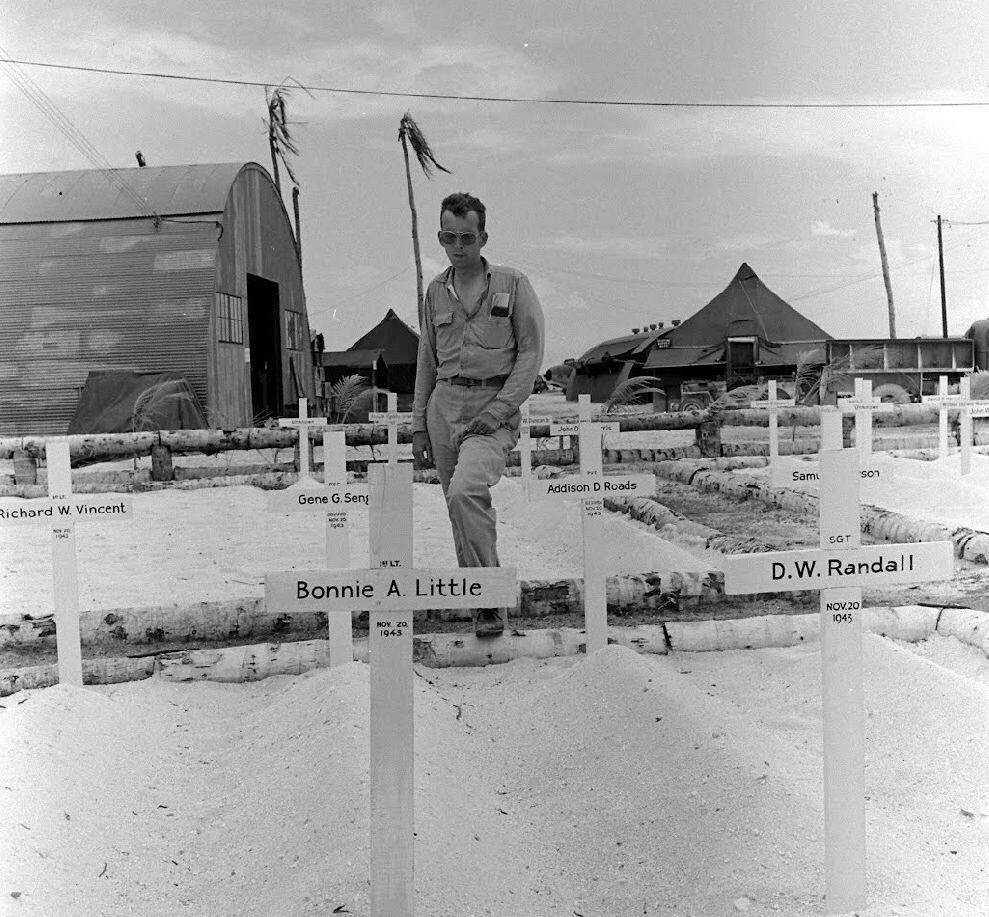In November 1943, Randall was a member of Company C, 2nd Amphibian Tractor Battalion, 2nd Marine Division, Fleet Marine Force, which landed against stiff Japanese resistance on the small island of Betio in the Tarawa Atoll of the Gilbert Islands, in an attempt to secure the island. Over several days of intense fighting at Tarawa, approximately 1,000 Marines and Sailors were killed and more than 2,000 were wounded, but the Japanese were virtually annihilated. Randall died on the first day of the battle, Nov. 20, 1943.
DPAA is grateful to the Department of Veterans Affairs for their partnership in this mission.
Randall's name is recorded on the Courts of the Missing at the Punchbowl, along with the others who are missing from World War II. A rosette will be placed next to his name to indicate he has been accounted for.
WASHINGTON — November 7, 2018
The Defense POW/MIA Accounting Agency (DPAA) announced today that the remains of a U.S. serviceman, accounted-for from World War II, are being returned to his family for burial with full military honors.
Marine Corps Sgt. Dwight W. Randall, 22, of Fresno, California, accounted for on September 13, will be buried November 20, 2018 in his hometown.
In November 1943, Randall was a member of Company C, 2nd Amphibian Tractor Battalion, 2nd Marine Division, Fleet Marine Force, which landed against stiff Japanese resistance on the small island of Betio in the Tarawa Atoll of the Gilbert Islands, in an attempt to secure the island. Over several days of intense fighting at Tarawa, approximately 1,000 Marines and Sailors were killed and more than 2,000 were wounded, but the Japanese were virtually annihilated. Randall died on the first day of the battle, Nov. 20, 1943.
Despite the heavy casualties suffered by U.S. forces, military success in the battle of Tarawa was a huge victory for the U.S. military because the Gilbert Islands provided the U.S. Pacific Fleet a platform from which to launch assaults on the Marshall and Caroline Islands to advance their Central Pacific Campaign against Japan.
In the immediate aftermath of the fighting on Tarawa, U.S. service members who died in the battle were buried in a number of battlefield cemeteries on the island. The 604th Quartermaster Graves Registration Company conducted remains recovery operations on Betio between 1946 and 1947, but Randall’s remains were not identified. All of the remains found on Tarawa were sent to the Schofield Barracks Central Identification Laboratory for identification in 1947. By 1949, the remains that had not been identified were interred in the National Memorial Cemetery of the Pacific (NMCP), known as the Punchbowl, in Honolulu, including one set, designated as Tarawa Unknown X-162.
On March 27, 2017, DPAA disinterred Tarawa Unknown X-162 from the NMCP for identification.
To identify Randall’s remains, scientists from DPAA and the Armed Forces Medical Examiner System used mitochondrial (mtDNA) analysis, dental, anthropological and chest radiograph comparison analysis, as well as circumstantial and material evidence.
DPAA is grateful to the Department of Veterans Affairs for their partnership in this mission.
In November 1943, Randall was a member of Company C, 2nd Amphibian Tractor Battalion, 2nd Marine Division, Fleet Marine Force, which landed against stiff Japanese resistance on the small island of Betio in the Tarawa Atoll of the Gilbert Islands, in an attempt to secure the island. Over several days of intense fighting at Tarawa, approximately 1,000 Marines and Sailors were killed and more than 2,000 were wounded, but the Japanese were virtually annihilated. Randall died on the first day of the battle, Nov. 20, 1943.
DPAA is grateful to the Department of Veterans Affairs for their partnership in this mission.
Randall's name is recorded on the Courts of the Missing at the Punchbowl, along with the others who are missing from World War II. A rosette will be placed next to his name to indicate he has been accounted for.
WASHINGTON — November 7, 2018
The Defense POW/MIA Accounting Agency (DPAA) announced today that the remains of a U.S. serviceman, accounted-for from World War II, are being returned to his family for burial with full military honors.
Marine Corps Sgt. Dwight W. Randall, 22, of Fresno, California, accounted for on September 13, will be buried November 20, 2018 in his hometown.
In November 1943, Randall was a member of Company C, 2nd Amphibian Tractor Battalion, 2nd Marine Division, Fleet Marine Force, which landed against stiff Japanese resistance on the small island of Betio in the Tarawa Atoll of the Gilbert Islands, in an attempt to secure the island. Over several days of intense fighting at Tarawa, approximately 1,000 Marines and Sailors were killed and more than 2,000 were wounded, but the Japanese were virtually annihilated. Randall died on the first day of the battle, Nov. 20, 1943.
Despite the heavy casualties suffered by U.S. forces, military success in the battle of Tarawa was a huge victory for the U.S. military because the Gilbert Islands provided the U.S. Pacific Fleet a platform from which to launch assaults on the Marshall and Caroline Islands to advance their Central Pacific Campaign against Japan.
In the immediate aftermath of the fighting on Tarawa, U.S. service members who died in the battle were buried in a number of battlefield cemeteries on the island. The 604th Quartermaster Graves Registration Company conducted remains recovery operations on Betio between 1946 and 1947, but Randall’s remains were not identified. All of the remains found on Tarawa were sent to the Schofield Barracks Central Identification Laboratory for identification in 1947. By 1949, the remains that had not been identified were interred in the National Memorial Cemetery of the Pacific (NMCP), known as the Punchbowl, in Honolulu, including one set, designated as Tarawa Unknown X-162.
On March 27, 2017, DPAA disinterred Tarawa Unknown X-162 from the NMCP for identification.
To identify Randall’s remains, scientists from DPAA and the Armed Forces Medical Examiner System used mitochondrial (mtDNA) analysis, dental, anthropological and chest radiograph comparison analysis, as well as circumstantial and material evidence.
DPAA is grateful to the Department of Veterans Affairs for their partnership in this mission.
Family Members
Sponsored by Ancestry
Advertisement
Explore more
Sponsored by Ancestry
Advertisement












